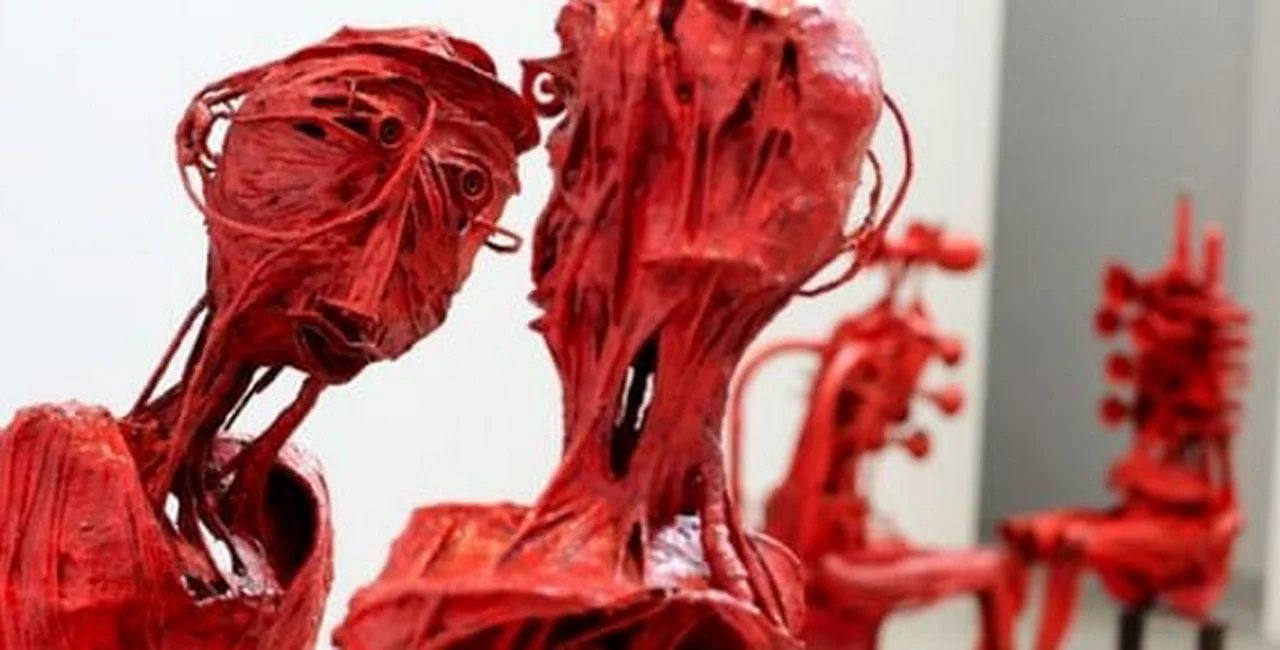Prague has a huge range of excellent art galleries, several of them administered by the City Gallery of Prague, some by the National Gallery, and others, like DOX, independently. In addition to the permanent displays, this summer sees a particularly rich variety of touring and temporary exhibitions. We went to see five of the best:
Jakub Schikaneder
Valdštejnská jízdárna, Valdštejnská 3, Prague 1
Open daily except Monday 10:00 to 18:00
Entry: Basic: 150 CZK; Reduced: 80 CZK; Family: 200 CZK
Until: 21 October 2012
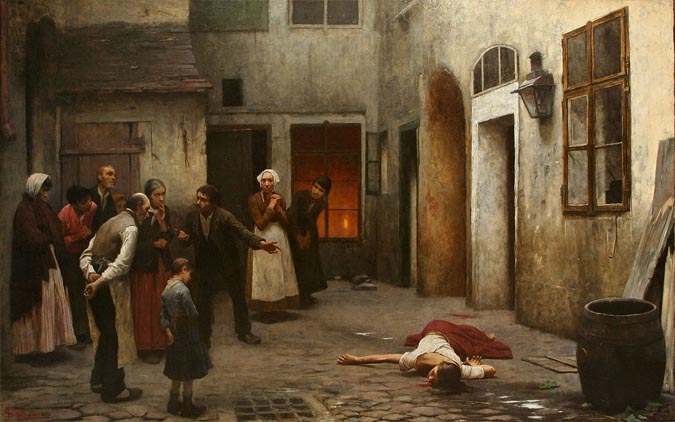
Jakub Schikaneder’s status as one of the most overlooked European painters of the late nineteenth century is being challenged once more by the National Gallery in their second major retrospective of the artist’s work in the past fourteen years. A near-contemporary of Monet, Schikaneder’s impressionistic nocturnes are among the most evocative images of the city ever created.
Occupying the liminal space between day and night, they offer a nostalgic glimpse into a world on the brink of change. Gas lighting, river-steamers, and new electric trams emerge from brown winter evenings, while horse-drawn carriages and pedestrians make their way home to century-old interiors lit by a single candle. A woman leans from a window, a child lies dying in a tiny bed.
It was a dim, crepuscular world that Schikaneder knew only too well. The early death of his father, and that of his own son when only a few days old, colored his life’s work. One of his few trips outside Bohemia was to the island of Heligoland in 1922. His seascapes seem to offer an escape from the parochialism and poverty of the town, and a romantic embrace of ocean and sky. But even in these last paintings – and it’s a hallmark of Schikaneder’s brilliance of style and technique – there’s an unremitting sense of sadness and farewell.
This stunning exhibit of Schikaneder’s life and work continues at the Waldstein Riding School (Valdštejnská jízdárna), next to Malostranská metro station, until 21 October 2012
Mucha’s Slav Epic
Veletržní Palac, Dukelských hrdinů 47, Prague 7
Open daily except Monday from 10:00 to 18:00
Entry: 180 CZK; reduced 90 CZK; other discounts available
Until: unspecified
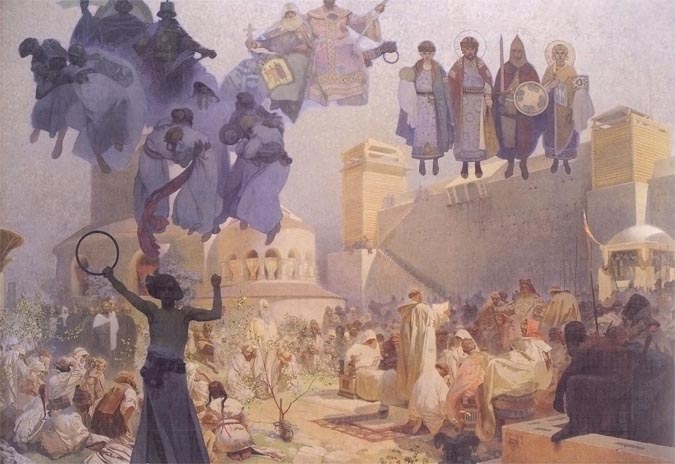
As my friend remarked at the ticket desk: ‘If it’s called ‘Epic’, it had better be.’ An hour later, as we emerged blinking from the Slav Epic exhibit at the Veletržní Palac, neither of us was in any doubt. I’d known about this monumental cycle on the theme of the history of the Slavic people for many years, but this was the first time I’d seen it in person, and I have to say that we were completely overwhelmed by the experience.
Alfons Mucha, the Moravian-born father of Art Nouveau, spent eighteen years on his life’s work – quite apart from his vast output as a designer of theatrical posters, stained glass, murals, and jewellery – and when he completed the series in 1928, it was displayed here in Prague at the Trade Fair Palace for seven years. Although the paintings were moved to Moravia for safekeeping during the war, it was Mucha’s wish that they should be permanently exhibited in Prague. In a long and protracted battle for a permanent home, the Epic has now returned to its original exhibition space, at least on a temporary basis.
With all twenty enormous canvasses displayed in a hauntingly lit triple-aisled gallery of appropriately cavernous proportions, the effect is that of entering a Parthenon-like temple. Visiting the exhibition is a sacred journey, appropriately enough given the theme of the paintings: nothing less than the entire spiritual story of the Slavs, from the earliest pagan rites to the coming of Christianity, the emergence of Hussitism, and the indomitable spirit of the people as they recovered from many centuries of religious infighting.
The vast paintings operate in multiple dimensions, combining historical vistas with allegorical figures which seem to float above and beyond the painted surfaces themselves. As a result, the viewer is witness to a rich panoply of actual events, and simultaneously in private dialogue with the spirit of the nation, frequently in the form of a youthful figure appealing directly to us in the foreground.
Ironically, this epic series on the unity of a race is presently the object of a ferocious tug-of-war between the City of Prague, the Mucha Foundation, and the town of Moravský Krumlov, where the cycle was displayed for many decades. Our advice is to see it soon before the legality of its continued display here is thrown into any further doubt!
Faces: The Phenomenon of Face in Videoart
Rudolfinum Gallery, Alšovo nábřeží 12, Prague 1
(please note the gallery will be closed on 14 and 15 July)
Open daily except Mondays
Tue – Wed, Fri – Sun, 10:00 to 18:00
Thur: 10:00 to 20:00
Entry: Basic: 150 CZK; Reduced: 80 CZK; Family: 200 CZK
Until: 16 September 2012
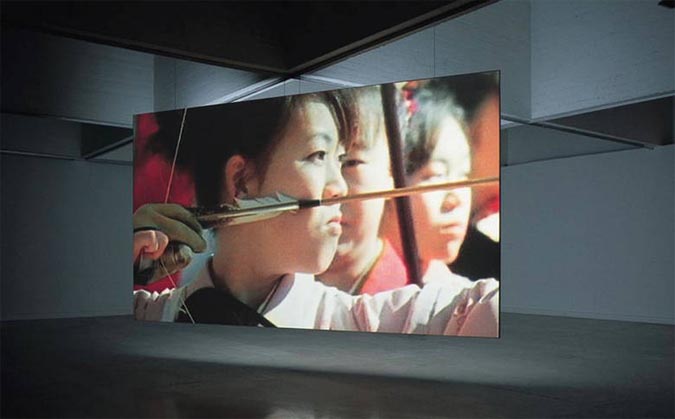
Love it or hate it, video art is as much part of our lives as television itself, and like TV, the genre has rapidly adapted to make use of new technologies. The current exhibition at the Rudolfinum Gallery on Alšovo nábřeží shows this evolution well, with grainy black-and-white cathode ray images gradually giving way to astonishing digital film projections of an epic grandeur.
Every conceivable video trick has been played in the last fifty years, it seems. The films of human faces which are the subject of the exhibition appear in sequence, upside-down, repeated in succession, played forwards and backwards, mutated and morphed, until we begin to question what a face is, and what it is that makes the human physiognomy quite so powerful. One of the most impressive exhibits is a two-screen projection by Douglas Gordon of sequences from the 1931 film Dr. Jekyll and Mr. Hyde, one the negative of the other. At times I was reminded of the Andy Warhol film portraits which showed here in 2009.
If anything, the later works in the selection demonstrate a more serene, less angst-ridden age of video. Gone are Nam June Paik’s satirical bendings of President Lyndon Johnson, deliberately warped to show how the media distort the news. Gone too are the tortured self-mutilations of the 80s, with their piercings and wrappings and x-ray exposures of the skull beneath the skin. What replaces them are portraits from a more
open age, with striking images of a spiritual intensity. Bill Viola’s 2000 work ‘Memoria’ has a face appearing ghostlike from a suspended silk cloth, in reference to the Shroud of Turin; Juan Manuel Echavarria’s ‘Bocas de Cineza’ features survivors of Columbia’s paramilitary violence mourning their lost friends in moving poetry and song; and Fiona Tan’s ‘Saint Sebastian’ is a beautiful dual film from 2001 showing participants at a coming-of-age archery contest in Japan.
Whether as anthropological study or satirical portraiture, one of the messages of ‘Faces’ is that as an art form, video has now come of age itself.
Karel Nepraš
Dox Centre for Contemporary Art
Open daily except Tuesdays
Sat – Mon: 10:00 – 18:00
Wed – Fri: 11:00 – 19:00
Entry: Basic: 180 CZK; Reduced: 90 CZK; Family: 300 CZK
Until: 1 October 2012
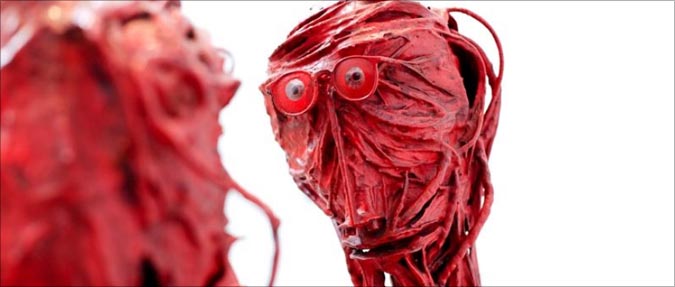
Throughout the twentieth century, images of enslavement and freedom have predominated in a European art which both reflects and feeds the imagination. The work of Karel Nepraš is typical, but also filled with the artist’s own personality and humour.
Visitors to Prague’s National Gallery of Modern art at the Veletržní Palac will already be familiar with Nepraš’s most famous piece, Velký dialog, in which two seated figures are frozen in an inescapable conversation. What makes the piece so blackly comic is the fact that, anatomically, both are formed from a collection of horns or speaking trumpets. They are not engaging so much in dialogue as all-out war, a fact reinforced by the single bright red of the sculpture.
Nepraš was strongly influenced in his choice of palette by Poe’s Masque of the Red Death, in which a noble and his guests all succumb to a fatal plague transmitted by a mysterious figure dressed in red. When the guests tackle the gruesome stranger, his cloak falls away to reveal that it is ‘untenanted by any tangible form’. Nepraš’s figures, too, are ‘hollow men’, their sinews of wire, their bones of metal pipe.
In this comprehensive exhibition of Nepraš’s sculpture, it seems the ‘Big Dialogue’ is not unique, but one of many such mashups between the human form and a kind of hopeless empty mechanism of wiring and tubes – ‘the plumbing of the human mind’, as my companion noted. The idea of the human being as a cog in a soulless machine is evident throughout the work of this fascinating artist.
The exhibition continues at the Dox gallery in Holešovice until 1 October.
Emil Filla
Troja Chateau
Open daily except Mondays
10:00 to 18:00 (Friday 13:00 to 18:00)
Entry: Basic 120 CZK ; reduced 60 CZK; family; family 250 CZK
Until: 4 November 2012
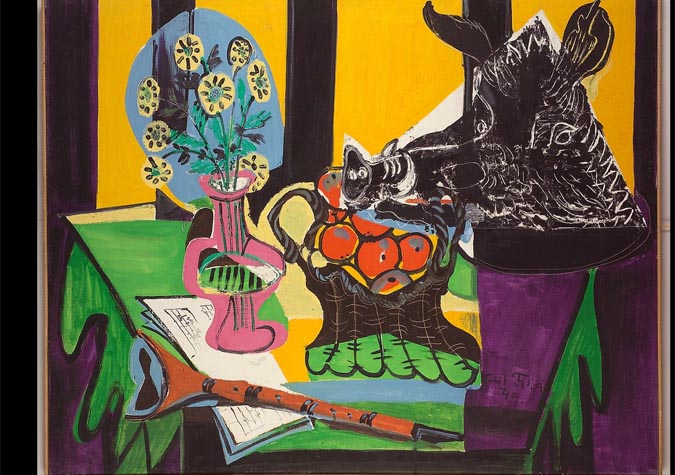
Filla is one of the best known of all the Czech cubists, and one of those who comes closest to the style of his major influences Picasso and Braque – most noticeable in the collection of still lifes that form the opening of this excellent exhibition at Troja.
Just as in the avant-garde paintings of his French contemporaries, everyday objects – fruit, bottles, stringed instruments – are no longer simply ‘nature morte’ but dynamic features of a geometrically shattered landscape, individual elements of an art seeking emancipation from traditional artistic approaches, especially in the years following the First World War.
Also on display is a marvelous collection of drawings from Filla’s cycle ‘Fights and Struggles’, in which he saw the twelve labors of Hercules as an analogy for the destruction of Fascism. It was a struggle that Filla was to lose, personally. As an artist, intellectual and ardent supporter of nationalism, he was simply too dangerous a figure to be at large, and along with Josef Čapek he found himself interred in the Nazi concentration camps at Duchau and Buchenwald throughout the war.
Astonishingly, he survived, and from 1945 returned to painting surreal pieces based on Slovak folk songs, as well as producing a number of Chinese black-ink paintings of the Bohemian landscape. The sheer range of Filla’s work on show, including two busts (one a modernist female portrait and one a fine academic study of a Greek philosopher’s head) is a remarkable testament both to the artist and to the curators of the exhibition.
The ticket to the Emil Filla exhibition is included in the price of the regular ticket to the chateau, and gives access to a number of other temporary displays, as well as the chateau itself, with is astonishing painted ceilings.
Additional exhibitions
Vincenc Vingler: Statues of animals (also at Troja until 4 November)
London Twelve: Contemporary British Art (House of the Stone Bell until 23 September)
Lubomír Typlt and Jakub Špaňhel (at the City Library until 9 September)
Further articles and websites of interest
Alex Went is the curator of The Prague Vitruvius, an illustrated guide to the city’s architecture.
Related articles











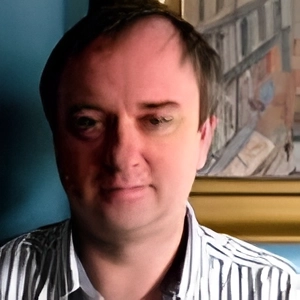
 Reading time: 8 minutes
Reading time: 8 minutes 